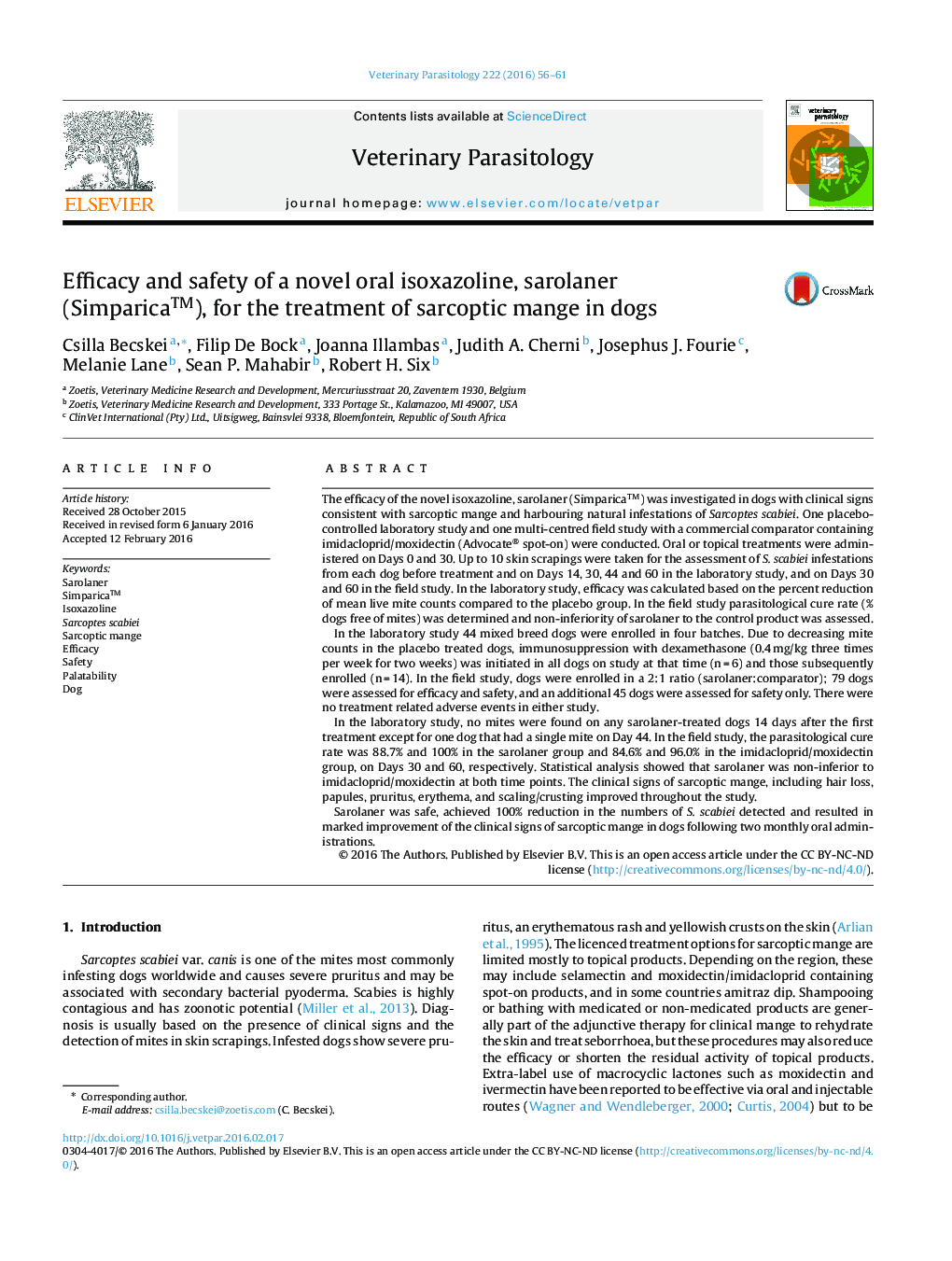| کد مقاله | کد نشریه | سال انتشار | مقاله انگلیسی | نسخه تمام متن |
|---|---|---|---|---|
| 2469841 | 1555654 | 2016 | 6 صفحه PDF | دانلود رایگان |

• Sarolaner was safe and highly effective for the treatment of sarcoptic mange in dogs.
• Client owned and laboratory and dogs were mite free after two monthly treatments.
• Sarolaner dosed orally was non-inferior to topically applied imidacloprid/moxidectin.
• Clinical signs of sarcoptic mange markedly improved in sarolaner-treated dogs.
• Simparica Chewable tablets were highly palatable with the majority of tablets accepted by free choice.
The efficacy of the novel isoxazoline, sarolaner (Simparica™) was investigated in dogs with clinical signs consistent with sarcoptic mange and harbouring natural infestations of Sarcoptes scabiei. One placebo-controlled laboratory study and one multi-centred field study with a commercial comparator containing imidacloprid/moxidectin (Advocate® spot-on) were conducted. Oral or topical treatments were administered on Days 0 and 30. Up to 10 skin scrapings were taken for the assessment of S. scabiei infestations from each dog before treatment and on Days 14, 30, 44 and 60 in the laboratory study, and on Days 30 and 60 in the field study. In the laboratory study, efficacy was calculated based on the percent reduction of mean live mite counts compared to the placebo group. In the field study parasitological cure rate (% dogs free of mites) was determined and non-inferiority of sarolaner to the control product was assessed.In the laboratory study 44 mixed breed dogs were enrolled in four batches. Due to decreasing mite counts in the placebo treated dogs, immunosuppression with dexamethasone (0.4 mg/kg three times per week for two weeks) was initiated in all dogs on study at that time (n = 6) and those subsequently enrolled (n = 14). In the field study, dogs were enrolled in a 2:1 ratio (sarolaner:comparator); 79 dogs were assessed for efficacy and safety, and an additional 45 dogs were assessed for safety only. There were no treatment related adverse events in either study.In the laboratory study, no mites were found on any sarolaner-treated dogs 14 days after the first treatment except for one dog that had a single mite on Day 44. In the field study, the parasitological cure rate was 88.7% and 100% in the sarolaner group and 84.6% and 96.0% in the imidacloprid/moxidectin group, on Days 30 and 60, respectively. Statistical analysis showed that sarolaner was non-inferior to imidacloprid/moxidectin at both time points. The clinical signs of sarcoptic mange, including hair loss, papules, pruritus, erythema, and scaling/crusting improved throughout the study.Sarolaner was safe, achieved 100% reduction in the numbers of S. scabiei detected and resulted in marked improvement of the clinical signs of sarcoptic mange in dogs following two monthly oral administrations.
Journal: Veterinary Parasitology - Volume 222, 30 May 2016, Pages 56–61